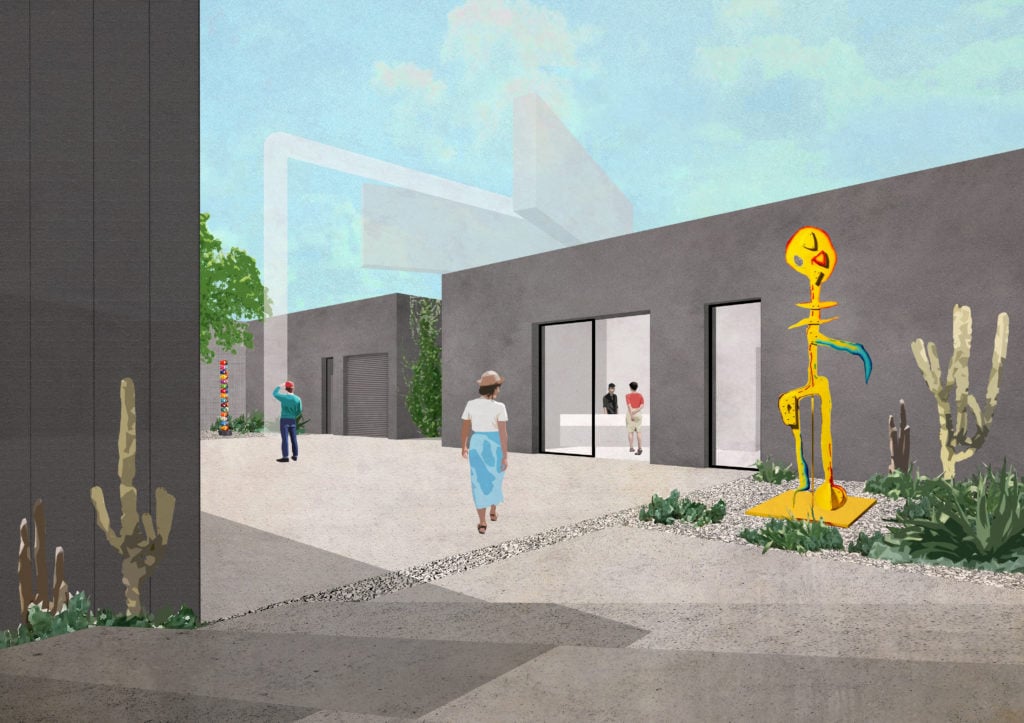Galleries
‘I’m as Hungry as Ever’: Art Dealer David Kordansky Will Expand His Gallery to Take Over an Entire City Block in LA
The dealer is doubling down in Los Angeles.

The dealer is doubling down in Los Angeles.

Henri Neuendorf

This spring, Los Angeles-based dealer David Kordansky will expand the South La Brea Avenue exhibition space that his eponymous gallery has inhabited since 2014.
Designed by Kulapat Yantrasast of wHY architects—the firm behind LA’s Marciano Foundation, the renovation and expansion of San Francisco’s Asian Art Museum, and Kordansky’s existing space—the new compound will feature tiers of landscaped stairs and a courtyard to showcase sculpture and host readings, talks, and performances. Meanwhile, the gallery’s indoor exhibition space will grow to 7,000 square feet.
When complete, the gallery will span nearly an entire city block and cement Kordansky—who represents a multigenerational, multidisciplinary roster of artists ranging from octogenarian painter Sam Gilliam to the 37-year-old Iranian-American artist Tala Madani—as a top player in the city’s art scene.
“We couldn’t pass up the chance to expand right next door,” David Kordansky told artnet News. “This is a once-in-a-lifetime business opportunity and we had to jump…. Life is short and we want to do as much as we can. I’m 41 years old and I’m as hungry as ever.”
Kordansky isn’t alone. His move comes at a moment when galleries are increasingly polarized between the ultra-lean and the ultra-luxe. While the small ones struggle to stay afloat, the bigger ones feel they must continue to grow to remain competitive and keep their most bankable artists feeling happy and challenged—or risk losing them to an even larger rival.
Next fall, for example, Pace Gallery is due to open an eight-story gallery in Chelsea that extends across 70,000 square feet and includes a screening room and outdoor exhibition space. Meanwhile, David Zwirner has hired Renzo Piano to build a $50 million, five-story gallery that is expected to open nearby in 2020.
“Artists want to see their gallery put their money where their mouth is,” Kordansky admitted. “They want to see the gallerist invest in the future of the gallery. They want to develop a complementary career trajectory that will hopefully last a lifetime.”
Counterintuitively, Kordansky added that the expansion will also provide “greater intimacy” to weary collectors aching for a more personalized experience. “I’ve observed a growing exhaustion and fatigue on the fair circuit,” he said. By contrast, he hopes, the new space will serve as a destination in its own right. “Many collectors are yearning for a reconnection to a more private experience with greater engagement. Our new space is an expansion, but also an invitation to a more focussed experience.”
For those who can afford it, additional real estate also helps dealers spend smarter in the long run. They can save money by vertically integrating less sexy aspects of the art business, like storage and logistics, by bringing all of these important operations under one roof. Some galleries even use the opportunity to add additional money-makers like gift or book shops, and in some cases cafes and restaurants (although Kordansky has no plans to get into food service).
Grow or go is the new mantra, and given the choice, most dealers are choosing the former.